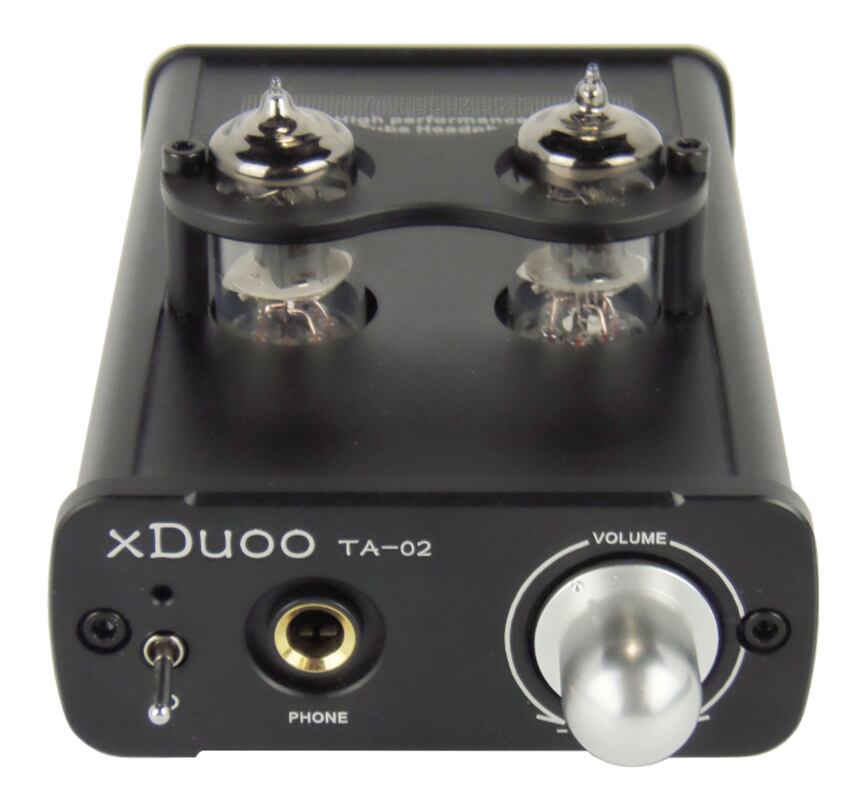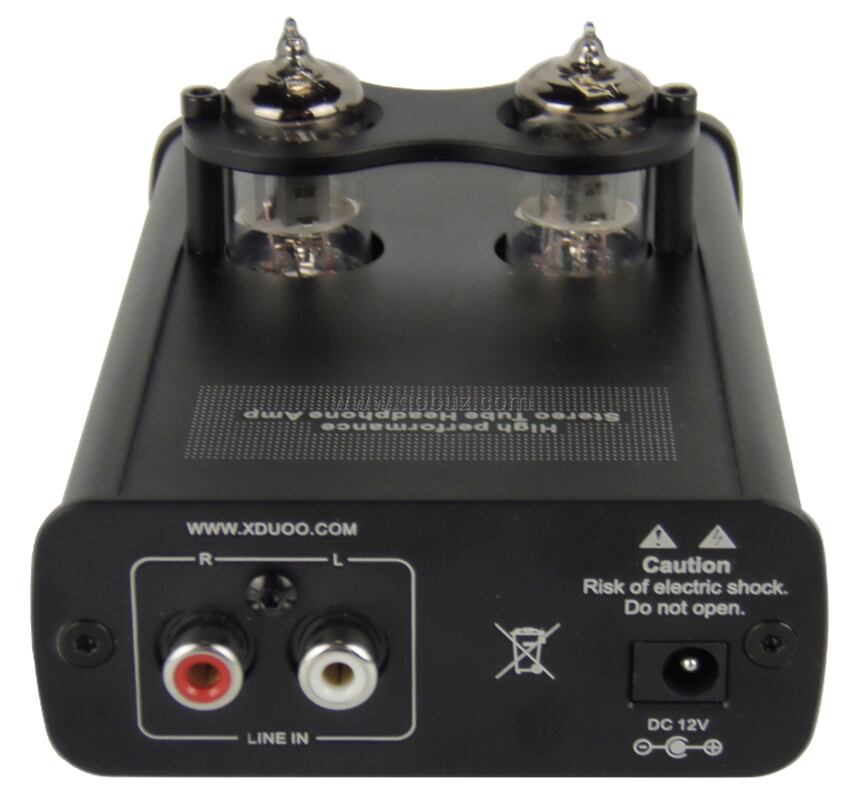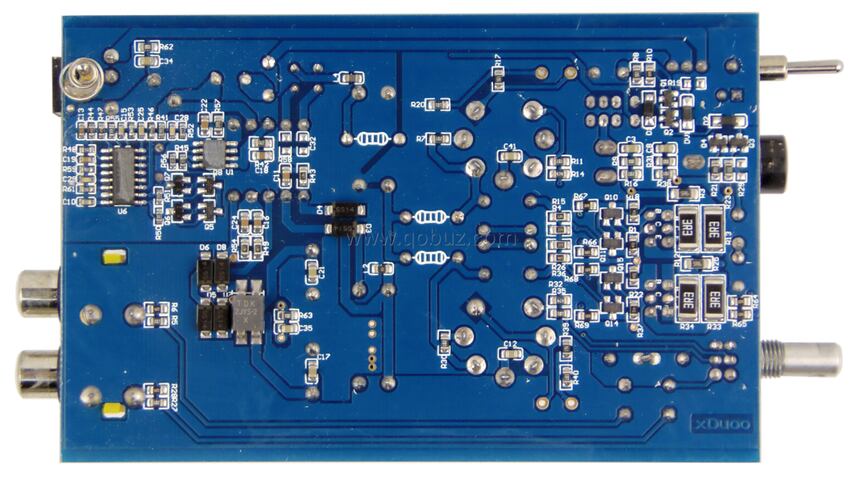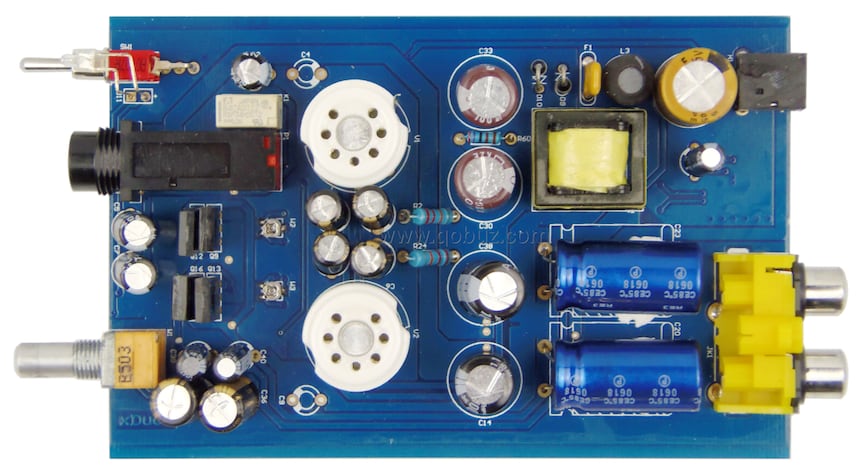A few months ago, we reviewed in the Qobuz Hi-Res magazine columns the very beautiful, very original and high-performing XD-05 digital-to-analog converter from the Chinese brand Duoo, that we had discovered on the Internet and introduced to Audiophonics, who decided to add it to its catalog.
For this testing ground, we’ve chosen to present you with the TA-02 headphone amplifier from this brand. It uses tubes for its preamplification, and its functionalities (as well as its connectivity) aim for one thing and one thing only: plug a source, amplify it, dose the power through volume control and deliver it to a pair of headphones. It couldn’t be simpler, really.
But this simplicity of appearance and use hides high-quality electronics and manufacturing that generate a substantial dose of power with flattering sound results. Let’s discover how...
||About the xDuoo TA-02 Headphone amplifier|| |Type:|desktop headphone tube amplifier| |Function:|amplifies an external source to power a pair of headphones| |Inputs:|stereo on RCA| |Audio outputs:|6.35 mm headphone Jack| |Accepted impedances:|from 16 to 600 Ω| |Amplifier power:|780mW / 32Ω| |Frequency response:|from 10 Hz to 100 kHz| |Gain:|+15dB| |Dimensions (L x H x P):|84 x 70 x 151| |Weight:|260 g (0.57 lbs)| |Design/Manufacturing:|China/China| |R.R.P.:|around 120 euros| |Contact:|Audiophonics|
Presentation
Even if it’s not revolutionizing the aesthetics of the genre, the small xDuoo TA-02 headphone amplifier looks rather nice, with a few pleasant curves, including the ones of the silver volume knob, fully in line with the glass bulbs partially protected by a metal piece and extending beyond the top of its fully black anodized aluminum box.

On its facade, a small toggle switch located on the far left and sitting below a small blue LED allows you to turn the device on and off. To its right, the manufacturer has chosen to put a small 6.35 mm Jack, which seems wise given the available power (almost 0.8W) and maybe even more wise given the wide selection of accepted impedances—the values of 150, 300 ohms or beyond being generally absent of portable headphones possessing a 3.5 mm Jack plug.
The connectivity in the back of the box does not give rise to much comment with its power adapter socket (unfortunately it’s a US standard outlet, so you’ll have to find a US female to your country’s male adapter if you live in another country) and its RCA stereo input.

Manufacturing
The electronics of the xDuoo TA-02 headphone amplifier are set up well and spread on an epoxy glass two-sided circuit board. The lower part of the circuit gathers the thinner components, starting with the high-voltage circuitry handling the powering of the tubes (on the top left side), whose markings have been erased by the manufacturer. We haven’t been discouraged by this fact, especially since, to create high voltage from continuous low voltage, you need a modulation circuit and power elements switching the continuous tension to a step-up transformer, the chopped voltage tapped from the secondary being then rectified and filtered to become a continuous high voltage.

The switching element seems to be a MosFet Vishay Siliconix double transistor in a SO8 (U1) box, the pins 5 to 8 linked two by two speaking in favour of our assumption. As for the modulation, a marking residue on the integrated circuit box has allowed us to recognize a Texas Instruments TL494 (U6) pulse-width-modulation control circuit. Just below these elements, you’ll find the rectifier diodes coming out of the step-up transformer. The right side of the circuit hosts some of the components—active and passive—of the two channels of the amplification circuits.
On the top side of the circuit are located the bigger components, including the two stands for the 6J1 tubes—a model celebrated for its preamplification—made from ceramics, so as to bear the high temperature of the heating tubes. You’ll also find the filtering circuit going into the power supply, composed of a 1000 μF/35V Nichicon electrochemical capacitor and a self on ferrite accepting high voltage, as well as the step-up transformer and the two 100 μF/100V electrochemical capacitors on the preamplifying tubes’ high-voltage supply.

Two Rubycon 1000 μF/16V electrochemical capacitors filter the symmetrical power supplies of the transistored amplification stages, each of which uses a symmetrical push-pull arrangement of additional transistors BD139 and BD140, models using the epitaxial technology, famous for their musicality, and often used in power stages of headphone amplifiers.
The connection between the electronics and the signals to amplify is done through two electrochemical capacitors, seemingly non polarized, glued flat on the circuit board and whose value we weren’t able to see, while the headphone plug is preceded by a relay blocking all signal output during the tube warming-up phase.
Sound
We used the new Desktop Qobuz for PC as a player, in conjunction with a Leaf Audio DAC equipped with a Burr-Brown PCM5102 conversion chip used without post-filter, a configuration preventing all feedback, and of course our Oppo PM-3 headphones.
We have thus enjoyed a warm restitution, almost sensual, of Sibelius’ Symphony No. 7, from the beautiful Complete Symphonies by Okko Kamu, conducting the Lathi Symphony Orchestra. The playback of this last symphony of the Finnish master Okko Kamu unquestionably gains in density thanks to the electronics of the TA-02 amplifier, and the substantial power delivered with smoothness really dazzles your ears and emphasizes the dynamics and colors of the Sibelian orchestra. In short, we had a good time!
It was the same with Vivaldi’s Vespri per l'Assunzione di Maria Vergine performed by the Concerto Italiano conducted by Rinaldo Alessandrini. It was wider and more colorful than usual but kept on the whole its intensity and liveliness. It’s a Vivaldi that was less subtle than in other configurations, but its power of seduction remained intact.
Next was a Renaud with an uncommonly deep voice who indulged by kissing a cop in his album Renaud (Bonus Edition), accompanied by solid bass and an accordion with a slightly dulled bright sonority. We rather enjoyed those characteristics, and they rather suit the man with a cheeky voice.
There was a good depth in the reproduction of the title Paradis Perdus from the album Christine and the Queens, which emphasized its nostalgic mood underlined by powerful bass and highlighted even more its intense charm.
To conclude, the xDuoo TA-02 headphone tube amplifier is a device full of charm, in its presentation as well as in its musical performances offering both warmth and depth, and furthermore able to deliver a substantial power and drive headphones with an impedance set between 16 and 600 ohms, which is rather uncommon at this price!
We would like to give our thanks to Audiophonics for lending us the xDuoo TA-02.
To follow everything that happens on Qobuz, join us on Facebook!
If you are a manufacturer, importer, retailer or key player in the digital music industry and wish to contact us, you can do it through the following email address: newstech@qobuz.com
If you’re enthusiastic about the Hi-Fi Guide column and wish to contact us, you can do it through the following email address: rubriquehifi@qobuz.com
